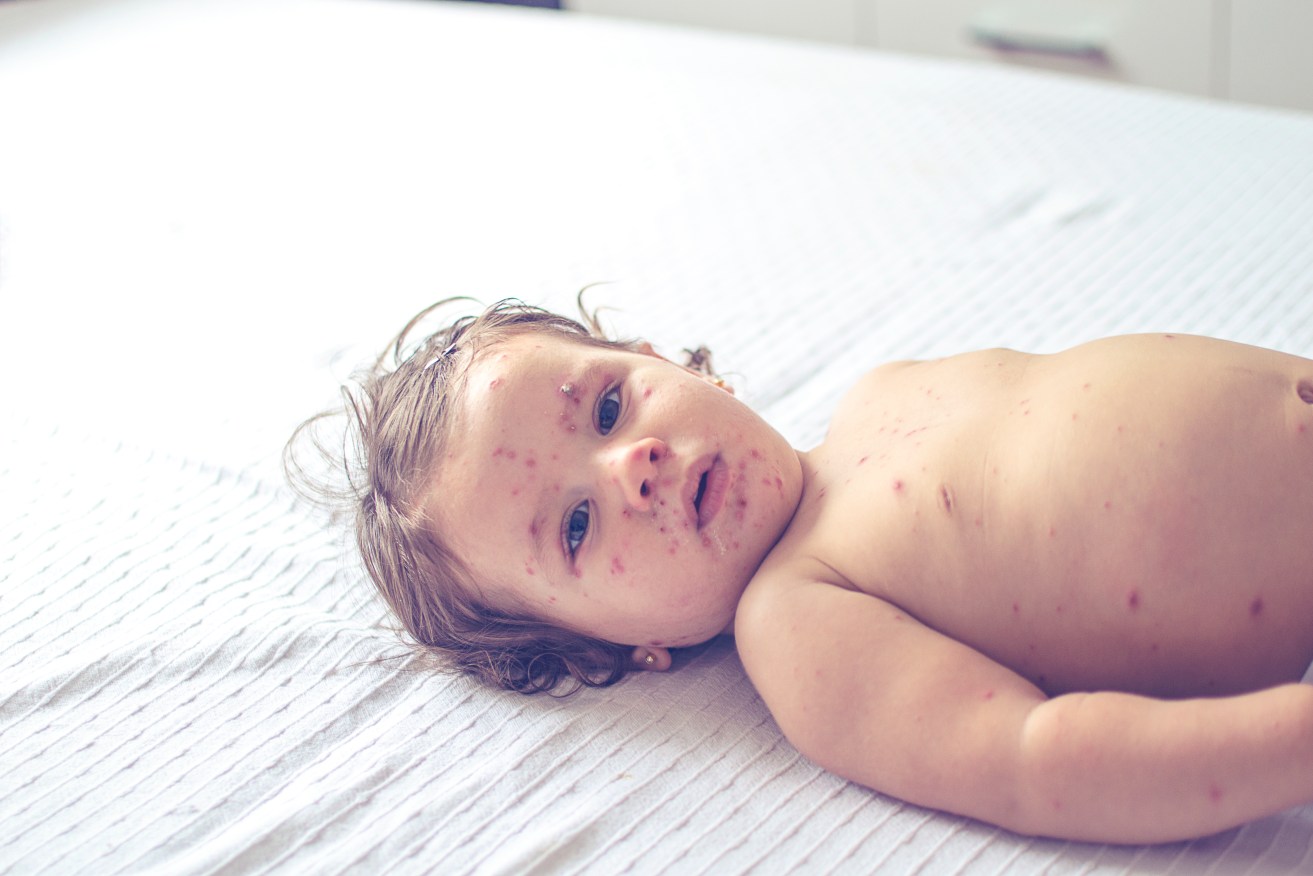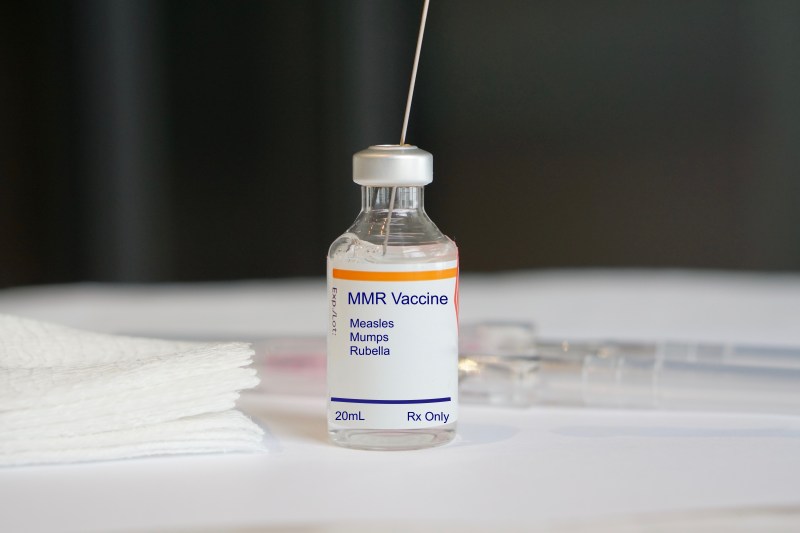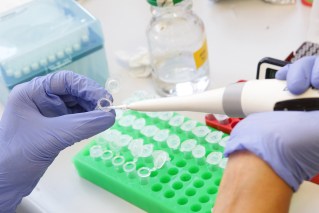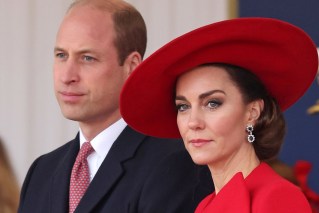Measles: Why two babies put health officials on edge


Vaccination rate against childhood measles are slipping here and abroad. Photo: Getty
Two babies returned to Sydney this week sick with measles – one came from Asia, the other from the Middle East.
NSW Health has advised people to be alert for symptoms of measles after the babies visited various locations.
One of the babies was aged seven months, the other nine months. This means they were both too young to be vaccinated.
The measles-mumps-rubella (MMR) vaccine is included on the National Immunisation Program (NIP) for children at 12 and 18 months of age.
It is also free in NSW for anyone born during or after 1966 who hasn’t already had two doses.
Children under the age of 12 months can have their MMR vaccine schedule adjusted to receive their first dose earlier if they are travelling to areas considered high risk for measles following consultation with their GP.
But the story here isn’t those two babies – as much as our fingers are crossed for their wellbeing.
So what is the real story?
The real story is that for two consecutive years child vaccination rates in Australia have declined, according to a report from the National Centre for Immunisation Research and Surveillance (NCIRS) published last month.
The NCIRS Annual Immunisation Coverage Report 2022 advised that the rates in Australia remained relatively high in global terms and said the ‘modest’ decrease was likely due to the effects of COVID-19.
But what does that actually mean?
Associate Professor Frank Beard is an Associate Director at NCIRS, and a former GP.
He told newsGP that the study was “the first comprehensive stocktake of the ongoing impact of the pandemic on vaccination coverage”.
He said the report “highlights a concerning downward trend in fully vaccinated coverage in children”.
From 2021 to 2022, coverage fell for each of the age milestones:
- From 94.2 per cent to 93.3 per cent of children fully vaccinated at 12 months
- 92.1 per cent to 91 per cent at 24 months
- And 94 per cent to 93.4 per cent at 60 months.
Failing to meet target
Australia’s immunisation coverage target stands at 95 per cent.
In 2021, because of record rates of childhood immunisation, Australia beat this target for coverage of five-year-old children to 95.22 per cent.
Because of the social restrictions put in place to contain COVID-19 – while new vaccines were developed and trialled – child immunisations dropped.
And they haven’t recovered. Indeed, they continue to go backwards.

The MMR vaccine is free and freely available. Parents need to do the right thing by their kids.
The NCIRS report advises the decline in coverage continued into the first half of 2023. It’s thought that access to GPs, particularly in rural areas, and vaccine hesitancy are to blame.
“Further exploration is needed to better understand these factors and inform approaches to effectively address barriers and increase vaccine uptake,” the report said.
An overall vaccine weariness has to be a contributor.
Analysis published in May advised:
Although coverage with two doses of COVID-19 vaccine rapidly reached more than 95 per cent in adults in Australia by late 2021, by December 4, 2022, uptake had slowed and plateaued at much lower levels for two doses among children aged five to 15 years of age (52.1 per cent) and for boosters among adults (72.4 per cent for dose 3 and 44.3 per cent for dose 4.)
But look at that low level of vaccination for kids. Therein lies an attitude that may be having an impact on childhood vaccination more broadly.
What’s happening overseas
Meanwhile, we need to appreciate that this decline, modest as it may be, is in line with what’s occurring overseas, notably in poorer countries.
The Centres for Disease Control reports:
Following years of declines in measles vaccination coverage, measles cases in 2022 have increased by 18 per cent, and deaths have increased by 43 per cent globally (compared to 2021).
This takes the estimated number of measles cases to nine million and deaths to 136,000 – mostly among children – according to a new report from the World Health Organisation (WHO) and the US Centres for Disease Control and Prevention (CDC).
In 2022, 37 countries experienced large or disruptive outbreaks compared with 22 countries in 2021. Of the countries experiencing outbreaks, 28 were in the WHO region for Africa, six in the Eastern Mediterranean, two in Southeast Asia, and one in the European region.
“The increase in measles outbreaks and deaths is staggering, but unfortunately, not unexpected given the declining vaccination rates we’ve seen in the past few years,” John Vertefeuille, director of CDC’s Global Immunisation Division, said.
“Measles cases anywhere pose a risk to all countries and communities where people are under-vaccinated. Urgent, targeted efforts are critical to prevent measles disease and deaths,” Vertefeuille said.
With these sorts of numbers, it’s inevitable we will see cases arriving in Australia. If measles vaccine hesitancy continues to grow, a tragedy is also inevitable.
What to know about measles
According to the federal government’s online health advice service: Measles is a very contagious viral illness.
You are likely to be immune if you are vaccinated against measles, or have already had measles.
Measles can lead to serious complications including ear infections, pneumonia (lung infection) and encephalitis (inflammation of the brain).
Vaccination is the best way to prevent measles.
Measles symptoms
The symptoms of measles usually appear about 10 days after exposure to an infected person.
The most well-known symptom of measles is a blotchy red rash, but this is not usually the first symptom.
Measles usually starts as a flu-like illness lasting for between two and four days with symptoms that include:
- Fever
- Tiredness
- Severe cough
- Conjunctivitis (red eyes)
- Runny nose
- White spots in the mouth (known as Koplik spots)
- On days three to seven of the illness, the rash appears. It’s usually red and blotchy, but not itchy.
- A measles rash generally starts on the head and spreads to the rest of the body. It usually lasts four to seven days.
Vaccine
In Australia, the MMR vaccination is given to all children at 12 months, and a second dose (the MMRV) is given at 18 months.
These vaccinations cover measles, mumps, rubella and chickenpox.
If your child has had two measles vaccinations then the chance that they will get measles is very low.
However, people who are not immunised have a 90 per cent chance of becoming infected if they are exposed to the virus.








